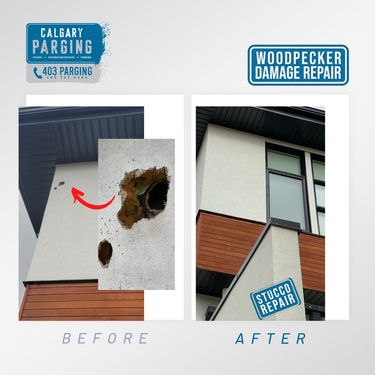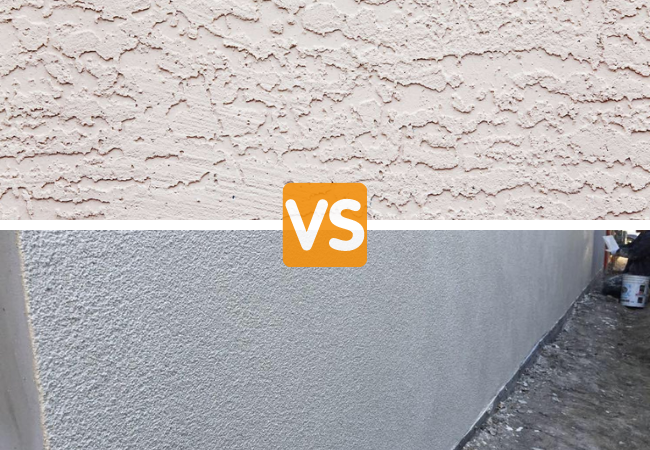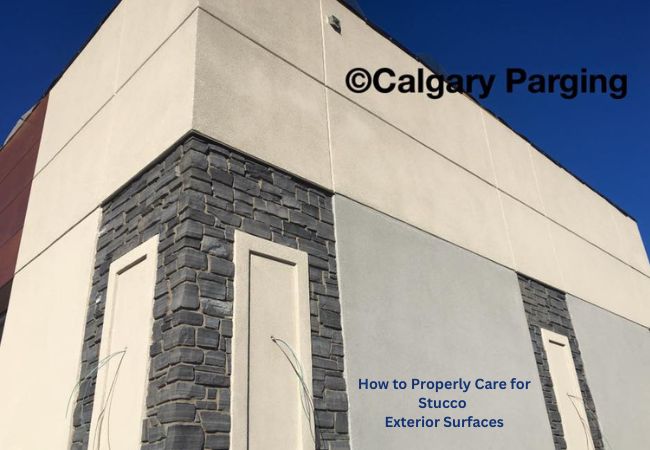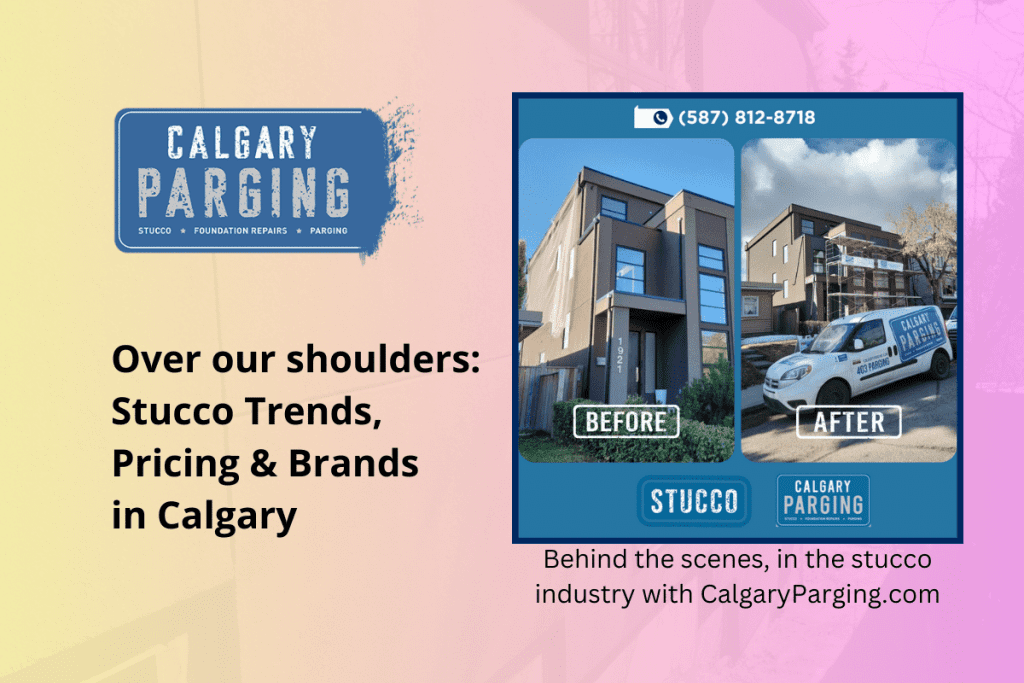Your home exterior is an integral component of the durability and aesthetic of your building so knowing what is exactly applied to your home is very important. Let’s discuss two surface applications that are frequently confused for the other’s stucco and parging.
They might seem similar, but they are not. Each has its advantages and disadvantages. To clearly understand the difference, let’s take a look at the aspects of stucco vs. parging.
Composition and Process Defined
Modern stucco is a cement mortar that is applied to the exterior of your home used mainly as hardy and attractive decorative finish. It can be applied to either block or brick, wood or steel framed surfaces. Pigments can be added to the stucco plaster mix to achieve the desired tint. Because the colour is integrated into the material, the original colour lasts long, with very minimal fading over time. Stucco can be applied manually or via a machine or stucco spray.
Parging consists of masonry-based mortar applied to masonry or concrete with the primary purpose of refining your exterior wall surface. This coating is applied to the above-grade, visible part of your structure’s wall foundation. It is usually applied manually with a trowel and pressed into the surface to fill imperfections to level the surface.
There are several purposes for applying parge coats like improving or creating airtightness, filling air voids, prepping the home exterior for top coating or simply levelling the surface for aesthetic reasons. Parging can also be applied to inner basement walls to add to structural insulation.
Shared Advantages of Stucco and Parging
Both materials are affordable, cost-effective construction solutions for your exterior. Stucco and parging are also adaptable to a wide variety of climates. A careful professional assessment is needed in both cases since the weather can vary in different areas, with due consideration given to how long and fast inclement changes occur.
To understand why one is recommended over the other in your type of home and area, let us take a closer look and compare stucco vs. parging.
What Does Stucco Have Going for It (Unique Stucco Pros)?
There is no denying stucco’s main advantage vs. parging lies on the aesthetic side. A master stucco professional can create a unique tint that will fit the home’s design using various pigments, with colours that can be retained for a long time.
As an exterior finish, stucco is a hardy material as it is rot and fire-resistant. Stucco can also be applied in several textured styles to achieve the appearance of other materials. This is done by controlling the aggregates to change the consistency of the finished mix coupled with various application techniques.
The Cons of Stucco
If your home is situated in an area where it is more wet than dry, you might reconsider using stucco. While genuine, a high-grade and professionally applied stucco mix dries easily without damaging the structure of your home, being porous and moisture-absorbent is an innate characteristic. With this in mind, it is important to have your home properly assessed.
When stucco suffers from water seeping repeatedly and your exterior is unable to dry completely, water can seep through the material of your home’s walls and cause it to crumble, resulting in damage to your home frame. This can be alleviated by the installation of weep screeds. Some exterior installers would also recommend that areas of your home that are exposed more to moisture be finished with another material like vinyl or brick.
These would usually be the base and top portions of your walls. Another drawback of stucco is the cost of repairs. Since there are multiple layers involved in stucco installation, it would cost a pretty penny to have it removed and reinstalled. This, at times, may involve the repair of a whole side of the wall.
Parging Pro’s: The Advantages of Parging
Parging is a simple and affordable way to level up your home’s protection against inclement weather. The parge coat acts as a barrier that shields the vulnerable areas of your structure from rain, snow, and ice. Some examples of areas prone to suffer because of these weather conditions are above-ground basement walls and the walls inside your basement.
The main function of parging may be functional but it helps your home aesthetics by smoothing out surface imperfections making it also decorative. A smooth parge coat can be beautifully painted over. Stucco can also be applied over unpainted parging which has been scored to be ready for the application of a bonding mixture.
The Cons of Parging
For parging to cure properly, the temperature needs to be at least 5°C for several days. This means that you cannot just apply an exterior parge coat if the weather is cold. There must be careful planning. An inner wall parge coat may be possible but still, the temperature has to be carefully considered.
While it seems like a very simple task, it is not recommended to DIY your parging mix. Adding correct quantities of its components is tricky and may vary depending on the structural and climate needs of your home.
The wrong parging mix could result in parging problems like cracking which may result in more issues in the long run. Periodically check your parged wall for defaced corners, cracks, or dented surfaces so you can have it quickly repaired by a professional to avoid further damage.
Professionals Make It Perfect
In learning to compare the different aspects of stucco vs. parging, hiring professional stucco and parging installers are very highly recommended. Not only is this because of mix and application reasons, but you can also gain from their experience in assessing what your structure needs, taking into consideration design and climate aspects. A botched application may end up costing you more. Always contact a trusted and reputable installer for the job.
6x Award Winning Stucco Company
We give an alluring finish to each surface by using premium made in Canada masonry products. 300+ verified reviews with 5-star ratings.
* No credit card required




